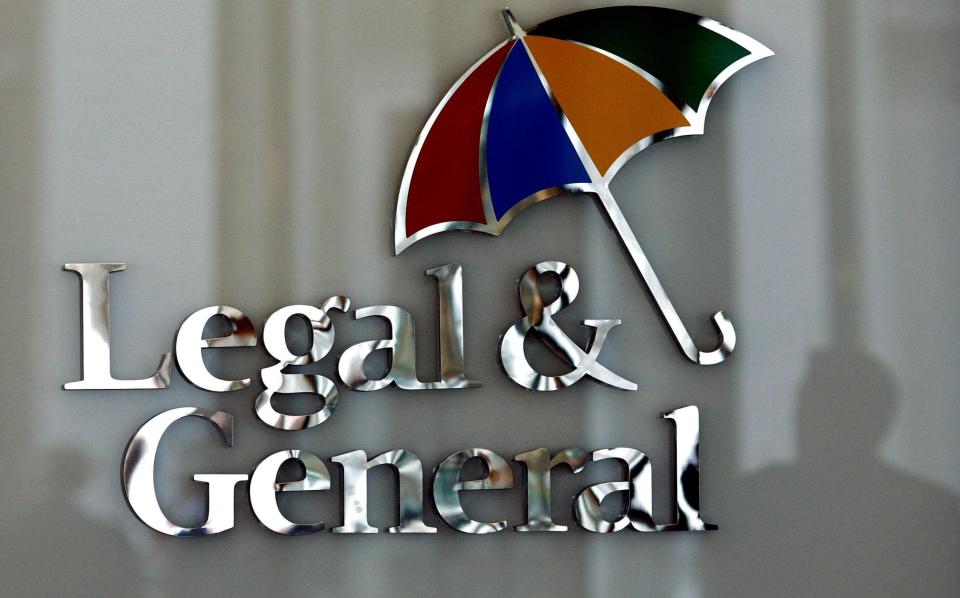Questor: cheap shares are a warning sign, so do we need to worry about Legal & General?

Why is Legal & General so cheap? Its shares trade at just 8.7 times forecast earnings and they yield 6.7pc on the basis of expected dividends. You would normally associate those figures with a company going backwards but earlier this month the insurer reported a 14pc rise in operating profits, just one of a string of positive numbers. What’s going on?
It’s hard to find any smoking guns in the interim results released earlier this month. Each of its divisions – retirement (annuities for individuals and pension schemes), investment management (the fund arm), capital (which runs “real” assets such as property) and insurance – made hundreds of millions of pounds in profits and collectively their earnings grew by 13pc compared with the same period last year.
You could, it’s true, point out that this growth was split rather unevenly among the divisions: retirement’s profits shrank by 5pc, investment management’s grew by just 4pc, while capital’s doubled and insurance’s rose by 52pc.
This does hint at the way in which some of the company’s income is lumpy, unpredictable or beyond its control. This is particularly the case in the retirement division, or at least the “wholesale” part of it. This is the arm that takes the risks involved in running final salary pension schemes off the shoulders of the employer concerned and on to L&G, which in effect offers an inflation-linked annuity to each member of the scheme.
If you are an employer of a decent size and have a large part of your workforce in a final salary scheme, this kind of bulk “derisking” can involve some pretty serious sums of money. So this part of L&G’s business involves a small number of big deals, with the result that you can have some periods of feast followed by others of famine.
The exact opposite is the case in the individual annuity market, which involves a very large number of much smaller contracts.
This all matters because the bulk annuity market is the largest of L&G’s businesses by some way: it accounted for £525m of the insurer’s £1.3bn in operating profits in the first half (before group-level expenses such as debt interest), or 41pc of the total.
The income of the asset management arm, meanwhile, which is Britain’s largest with about £1.3 trillion in assets, is unpredictable to the extent that the stock market is, because L&G receives a percentage of its assets under management and the value of those assets depends not just on L&G’s skill as a fund manager but also on the normal swings of the stock market.
A severe bear market would knock a big hole in that division’s income and there would be very little that the firm could do about it. And all asset managers face downward pressure on fees thanks to the rise of passive investing, although L&G is at least well represented in that area.
But this column is relatively relaxed about these threats. The bulk annuity market may be lumpy but the long-term trend towards pension funds paying insurers to take over the risks is well established. Stock market crashes do of course happen, as we were reminded last year, but they tend to be short lived.
In fact if we take a step back we see the insurer’s value more clearly. It is in the business of long-term savings: both accumulating them and turning them into income when retirement arrives. As we live longer and rely less on employers and the state, in this country at least, and as the emerging middle classes in other nations want a more secure life, L&G is well positioned to meet their and our needs. It helps that it is a well run business.
The market may dislike its relative complexity and the challenges of understanding insurers’ accounts, not to mention the sources of unpredictably we have mentioned. But a few more years of delivery of L&G’s ambitious and well-articulated targets on the generation of cash and capital and the payment of dividends may reassure investors in the end.
We have looked at some length at why the shares seem cheap because if those cheap shares do indeed signal weaknesses in the business the dividend will feel the effects in the end. But our confidence is borne out by the company’s declaration of an interim dividend of 5.18p a share, a 5pc rise on the 4.93p paid at the same stage last year, and its target to pay a cumulative £5.6bn-£5.9bn in divis by 2024.
Questor says: hold
Ticker: LGEN
Share price at close: 262p
Read the latest Questor column on telegraph.co.uk every Sunday, Tuesday, Wednesday, Thursday and Friday from 5am.
Read Questor’s rules of investment before you follow our tips.

 Yahoo Finance
Yahoo Finance 